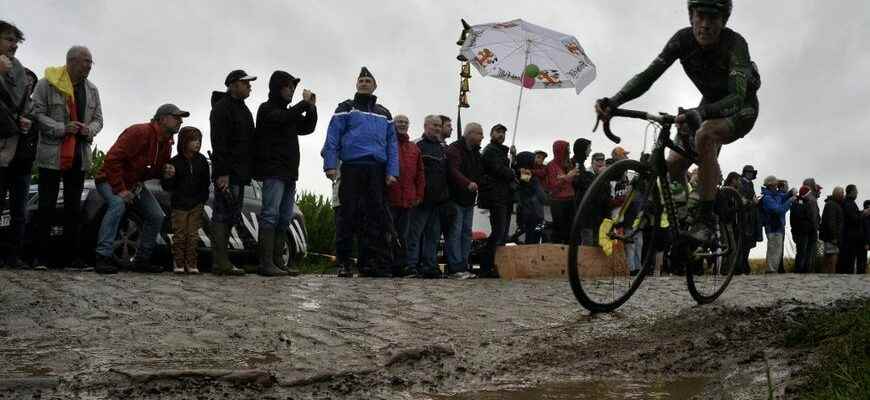After the solo victory of the yellow jersey Wout Van Aert the day before during the 4th stage, the Grande Boucle passes a second and last stage in the north of France this Wednesday with the return of the legendary cobblestones between Lille-Métropole and Arenberg Porte- of Hainaut.
The essential
- Special broadcast from 9 a.m. from the departure village
- Real departure scheduled at 2 p.m. from Lille-Métropole
- Arrival is scheduled between 5:15 p.m. and 5:35 p.m.
- The route and timetables in detail by clicking here
- Update the article by clicking here
- Our Tour de France 2022 file
Special broadcast on France Bleu Nord
The stage profile
After the 4th stage between Dunkirk and Calais the day before, the peloton remains in Nord Pas-de-Calais this Wednesday with a departure from Lille-Métropole and an arrival at Arenberg Porte-du-Hainaut on behalf of the 5th stage.
Lille is a stage city for the 18th time in its history. The last time was in 2014 with a sprint finish at Stade Pierre-Mauroy won by German rider Marcel Kittel. Arenberg is city-arrival for the 3rd time after 2010 and 2014.
This 157km long stage is particularly marked by symbols of the region such as Wallers – the name of the small town has become one of the symbols of the mining past – and the return of the cobblestones on the Grand Boucle, absent since 2018. Christian Prudhomme, the boss of the Tour de France, confided in France Bleu: “It’s the return of the cobblestones four years later. I’ve said it several times, when we go to the North, we are not going to ostensibly avoid the cobblestones. We are not going to avoid them at all. From Lille, from Lille-Métropole as far as Arenberg, arrival near the mining site, as in 2010 and 2014: 11 cobblestone sectors, including 5 completely new. Unheard of, neither on Paris-Roubaix nor on the Tour de France, sectors that Thierry Governor (in charge of the course at ASO, editor’s note)in love with cobblestones, went to unearth.”
In June, the organizers announced a slight modification to the route because recent urban development made the approach to the first cobbled section between Villers-au-Tertre and Fressain, south of Douai, dangerous. The runners will take it in the opposite direction to what was initially planned. This modification extends this stage by 3.3 kilometers.
► Move the button from left to right and vice versa to compare the route before and after it has been modified by the organizers.
In 2014, there were 15 cobbled sections (15.4km) with a finish at Arenberg-Porte du Hainaut. A stage which had seen the abandonment of defending champion Chris Froome, after another fall.
The Arenberg Gap will not be used by the peloton, as Christian Prudhomme explained: “It is right next to the finish and you will not have missed the fact that there is a TGV line. For obvious safety reasons, it is not possible to arrive on the Arenberg line with TGV which could tumble out at the last moment. It’s not possible. We’re not going to close the TGV line for the finish of a stage. It doesn’t make sense.”
In 2015, on the Paris-Roubaix, riders had to stop at a level crossing to let a TGV pass at Wallers, in the so-called “Pont Gibus” sector.
The Arenberg pit, where 32 million tonnes of coal were extracted between 1903 and the pits were finally closed in 1989, remains a vestige that keeps alive the memory of the tens of thousands of “black mouths” who plunged into the mine, in particular honored during the filming of Germinal by Claude Berri.
Stage cards
– –

– ASO
In total, there are 11 cobblestone sectors for a total of 19.4km with five unpublished sections north of Cambrai before joining cobblestones which are part of the tradition of Paris-Roubaix (Wandignies-Hamage and especially Sars-et-Rosières). To the output, there will be final cobblestones before arriving at Arenberg 7km away, the Wallers sector in Hélesmesbetter known as Gibus Bridgenamed after Gilbert Duclos-Lassalle, double winner of Paris-Roubaix (1992-1993).
- from Villers-au-Tertre to Fressain – 1,400 meters
- from Eswars to Paillencourt – 1,600 meters
- from Wasnes-au-Bac to Marcq-en-Ostrevent -1,400 meters
- from Emerchicourt to Monchécourt – 1,600 meters
- from Monchicourt to Emerchicourt – 1,300 meters
- Abscon – 1,500 meters
- from Erre to Wandignies-Hamage – 2,800 meters
- from Warlaing to Brillon – 2,400 meters
- from Tilloy-lez-Marchiennes to Sars-et-Rosières – 2,400 meters
- from Bousignies to Millonfosse – 1,400 meters
- from Hasnon to Wallers (Pont Gibus) -1,600 meters

– ASO
Stage times

– ASO

– ASO
The complete route of the Tour de France
► Tour de France 2022: discover the complete route step by step by clicking here

– ASO
